The Meyer-Drake Offenhauser engine of the 1950s was robust, powerful and reliable. After all, the 252 ci. DOHC inline four-cylinder engine had not only won the Indianapolis 500 every year from 1950 – 1960, but also captured the next two positions in each race as well. The Offy also set the pole winning time 10 out of those 11 years. No doubt the 252 Offy was the weapon of choice for the 500.
The AAA Contest Board had voted in early 1952 to allow stock-block engines starting with the 1953 500 at a 325 ci. likely to encourage OEM manufacturers to participate with their new V8 engines.
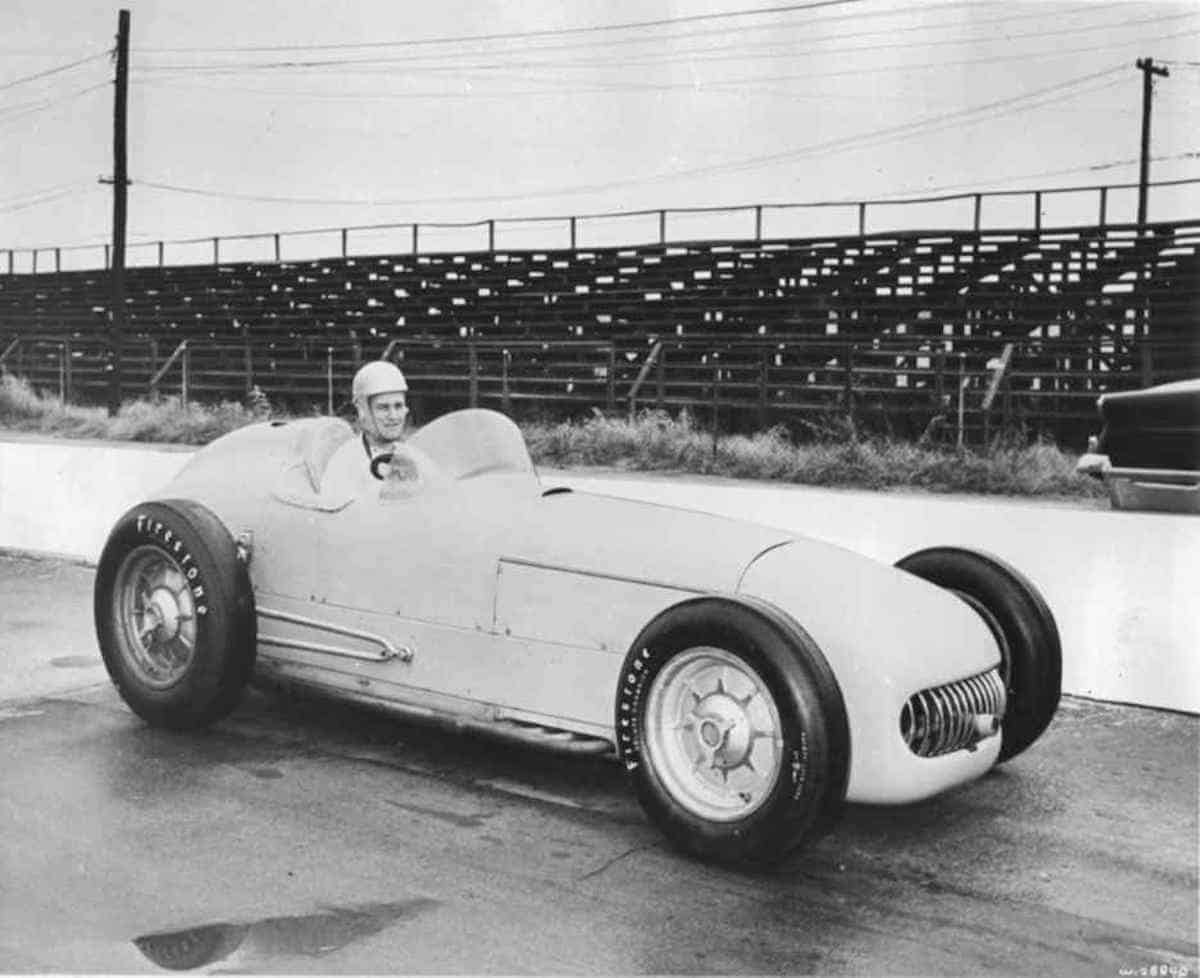
The new 331 CID Hemi V8 was the most powerful passenger car engine on sale at the time. Chrysler recognized the possibilities of using the new Hemi to compete in motorsports.
Their first race-related project using the Hemi was for a version developed for sport car racing entrant Briggs Cunningham to take on Ferrari and Jaguar in the Le Mans 24 Hours. While never capturing a win, Cunningham’s cars put in some strong finishes. As testament to the Chrysler Hemi’s power, the 1954 Cunningham was 10 mph faster than Jaguar, their closest competitor, down the Mulsanne Straight.
The Indy-bound Hemi, now given project number A311-3-EX2, featured a gear-driven high lift, long duration camshaft, roller tappets, larger valves, dual valve springs, high-strength pushrods, 12.5:1 compression ratio, aluminum pistons, Vertex Scintilla magneto and Hilborn-Travers fuel injection. Ports were cleaned and opened up and the combustion chambers were polished.
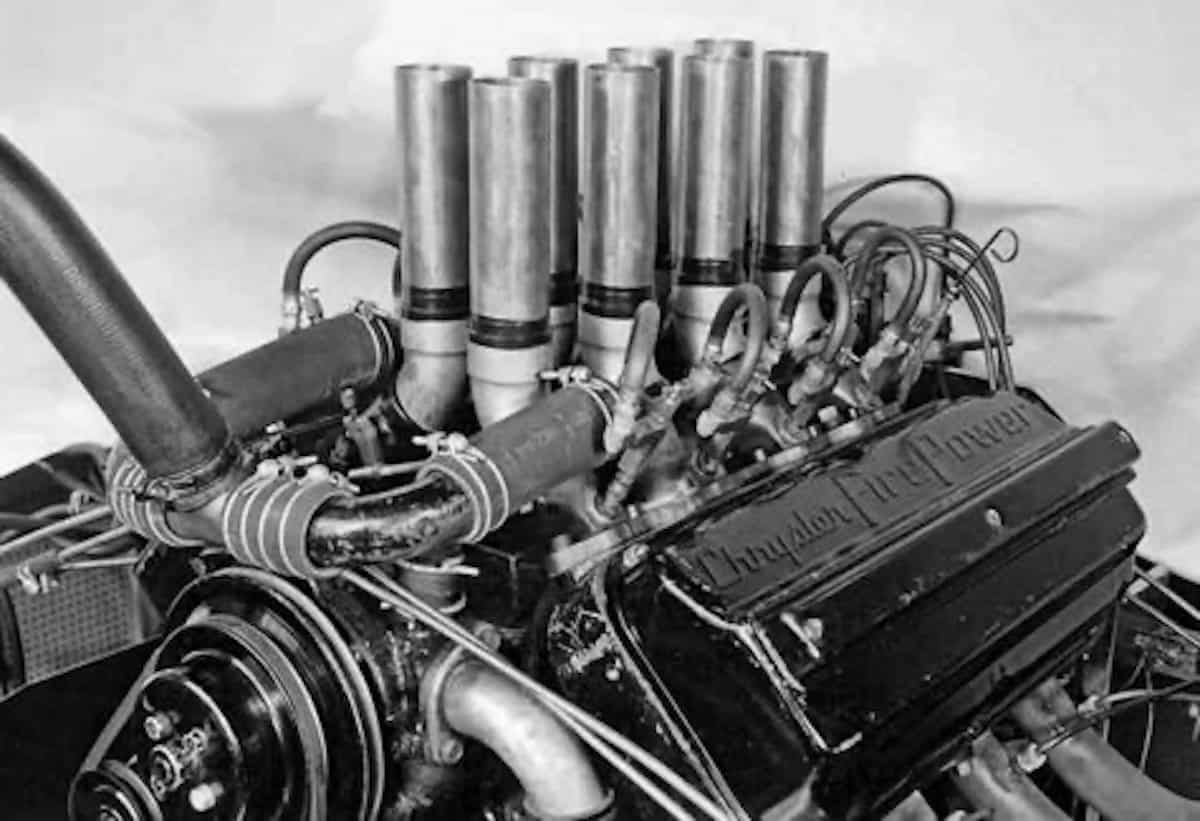
The stock block pushrod engine developed an incredible 404 HP at 5200 rpm (with some sources stating 447 HP as it was further developed). Compare that to the peaky Offenhauser which had to be wound to 6800 rpm to produce 420 HP.
In 1952, Chrysler dealer Roger Walcott’s ordered a new Kurtis-Kraft 500A roadster, chassis number 355-52, specifically designed around the Chrysler V8 in preparation for the 1953 race. Firestone and Chrysler were keen to see how the Hemi would perform at the Speedway so they hired Walcott’s team for a test run.
In October of 1952, promising young driver Joe James drove the Hemi-powered roadster for 140 miles (56 consecutive laps) at an average speed of 135.020 mph and 134.35 mph for the full race distance. The existing record was 128.922, set by Troy Ruttman in the 1952 500.
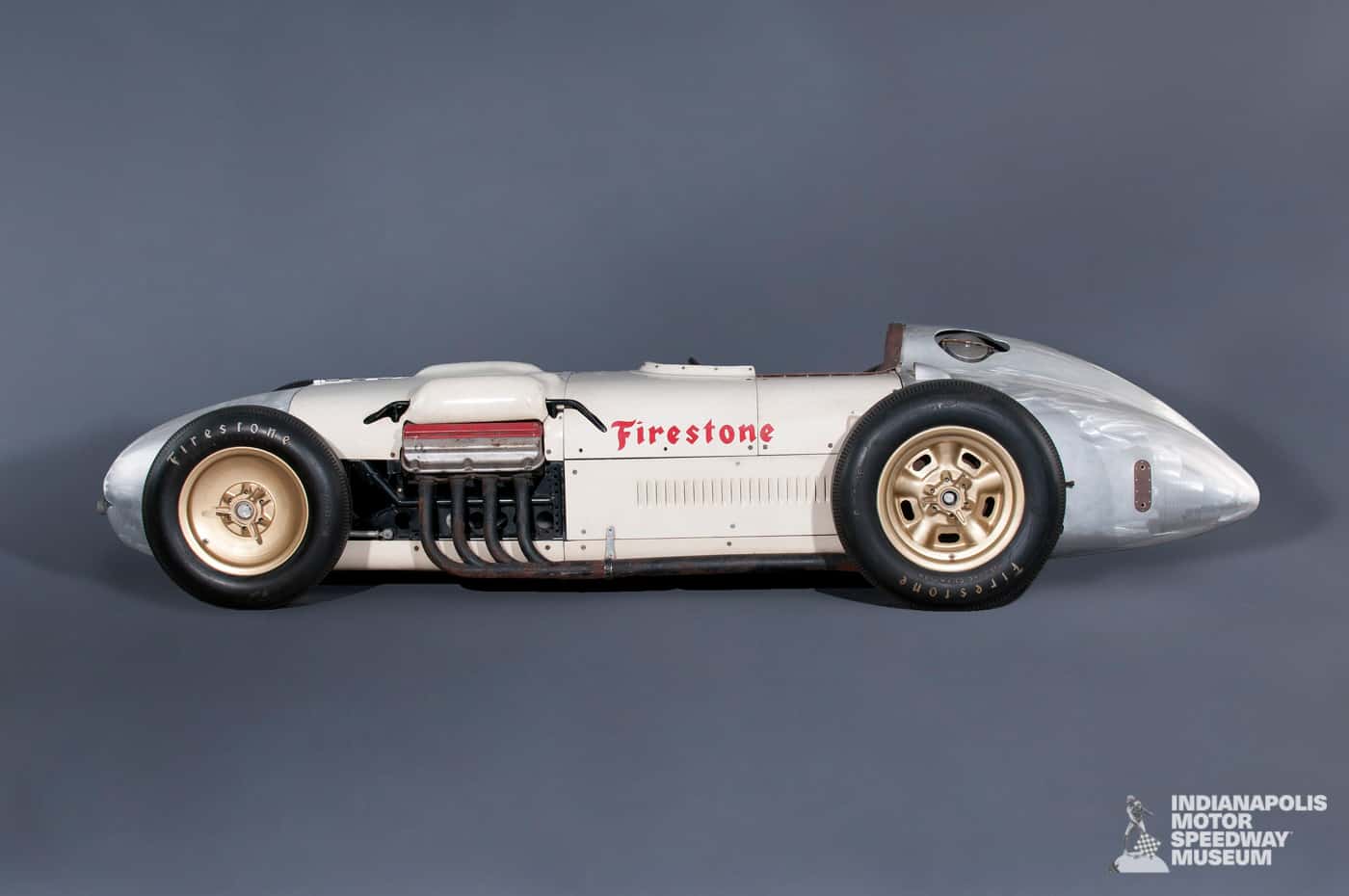
At the end of two weeks and 1,500 miles of testing, the results were clear: the A311 Hemi was most definitely a contender to win the 1953 Indianapolis 500.
The word got around quickly about the performance of the race-prepared Hemi. Faced with angry car owners who were looking at a considerable amount of cash invested in engines that would immediately become obsolete, the AAA Contest Board reacted.
In February 1953, they reduced the displacement for stock-block engines in Championship competition from 325 to 272 CID. The knee-jerk reaction came just a year after the decisions to increase allowed displacement for stock block engines.
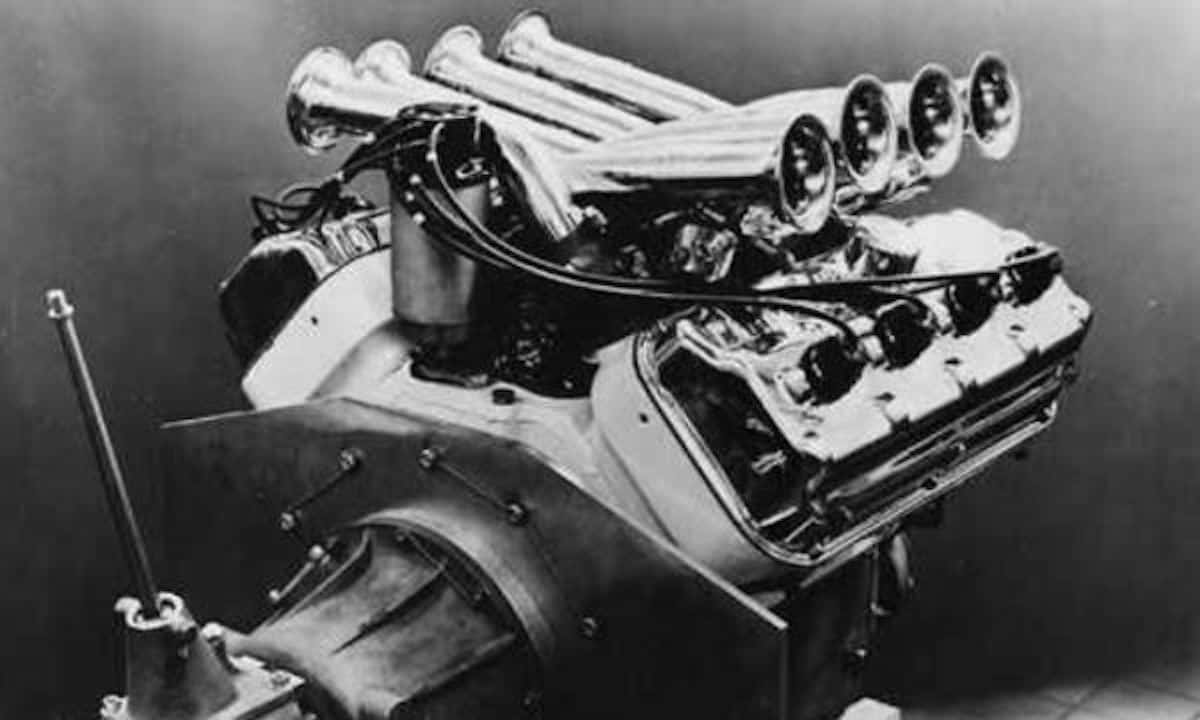
There could only be one reason – fear that the A311 Hemi could put all of those expensive Offenhauser engines on the shelf. The economics were severe. A single 252 Offy listed for a cool $10,000 in 1956. That’s $95,000 in today’s money and as top teams could own a half-dozen engines, it’s over $500,000 (2020) invested in what could easily become outdated equipment with no buyers.
Chrysler did rush through a program to develop smaller displacement version of the A311, now displacing 271 CID. The engineers managed to extract 350 HP at 5800 rpm from the smaller engine. Further development pushed engine speed to 6500 and then 7000 rpm but it wasn’t enough – the Hemi powered cars were lapping 4 to 5 seconds slower than the field. None of the three Hemi-powered cars entered made it through qualifying.
The lesson Firestone took from the Chrysler Indy adventure is that it could significantly reduce its cost of testing race tires. Instead of paying race teams a per day rate for the use of their car, crew and driver, the company bought itself its own roadster, Kurtis-Kraft KK500A, chassis No. 379-54, constructed to accommodate the A311 Hemi. Future NASCAR legend Ray Nichels was hired to pull the car together quickly as the two companies had a specific target in mind.
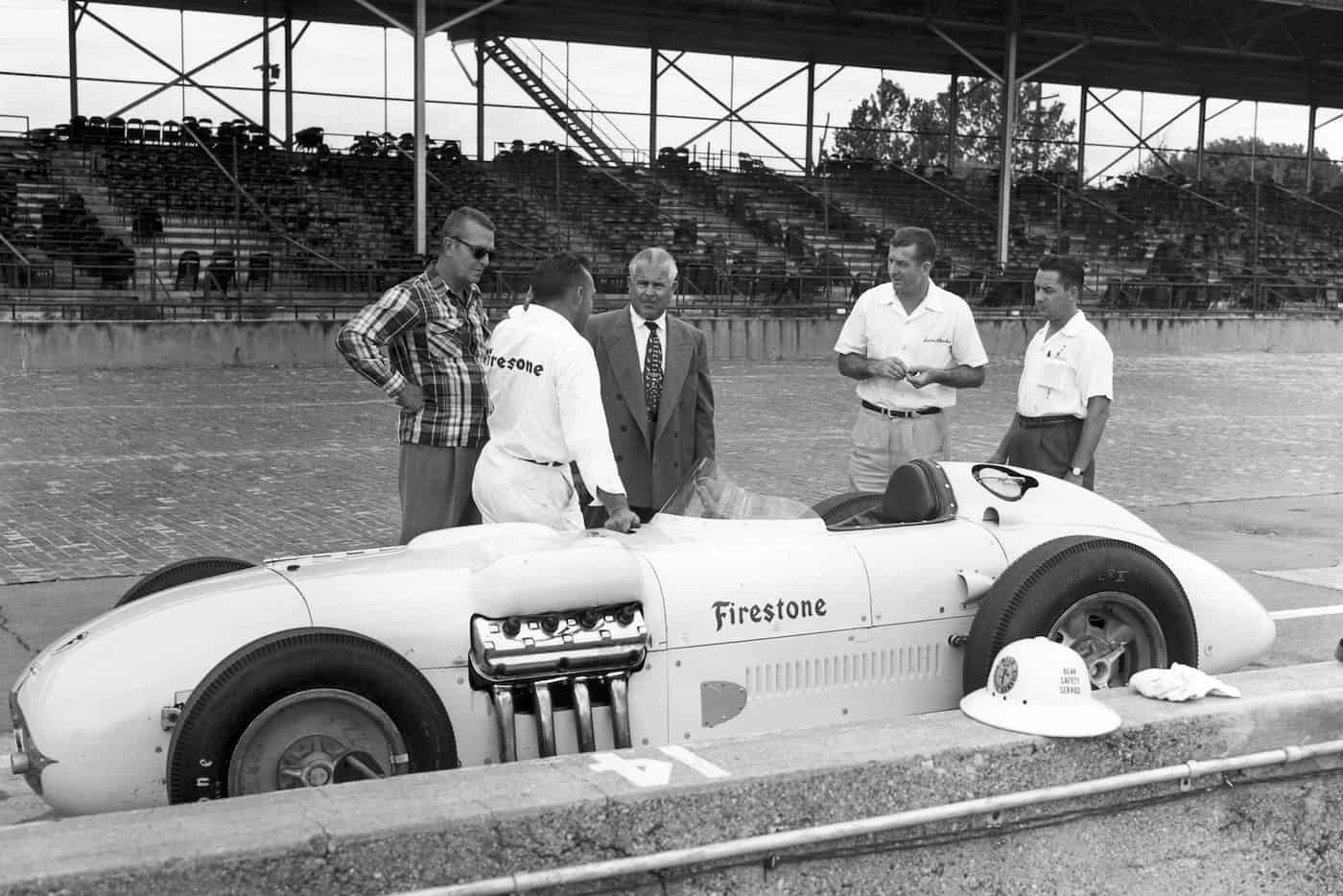
Chrysler and Firestone saw the opportunity to garner some extra press from the abbreviated Indy effort. As part of the opening ceremonies of the facility, the company invited the top four finishers to their newly-completed Chelsea, Michigan proving grounds – a 4.7 mile long, banked test track,. The high-speed ribbon cutting was scheduled for June 14, 1954 and over 400 members of the media were present to tour the facility and witness the show. Firestone would also debut its new Hemi-powered Kurtis Kraft roadster test car.
The Indy drivers participating were Bill Vukovich, Troy Ruttman, Jimmy Bryan and Jack McGrath, all driving Offy-powered cars. McGrath set the fastest lap of 179.386 mph, which handily eclipsed the previous record of 148.17 mph set in 1928 by Leon Duray in a supercharged Miller at the nearby Packard Proving Grounds.
Seeing the new but unfinished Hemi-powered Firestone test car on display at the event prompted Firestone brass to approach Nichels that day to see if he had enough confidence in the car he’d built to reset the record. Working in a shed on the proving grounds, Nichels had the car ready to run on June 30th. Indy veteran Sam Hanks then headed out onto the Chrysler track in the A311-powered Kurtis Kraft, resetting the world’s closed-course speed record at 182.554 mph. It would take until the early 1970s for that record to be eclipsed.
Small consolation for what might have been a game-changing paradigm for future 500 mile races.



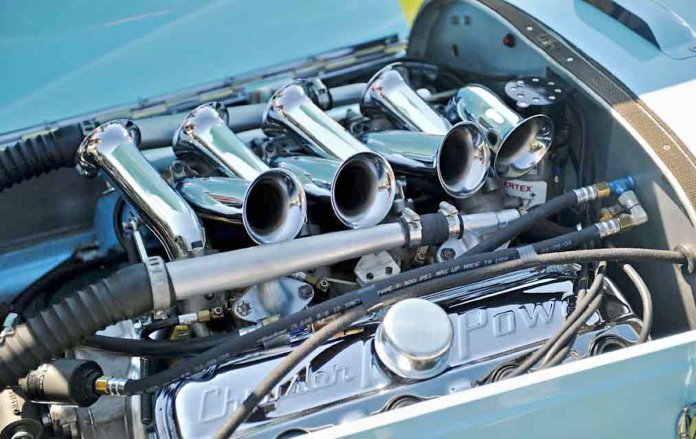


This story makes the operation that Penske maneuvered with the “Mercedes” push rod V8 in the 90’s even more incredible. Secrecy at its finest.
The days of stock-block power at Indy will likely never be seen again.
Does anyone remember the Ford sohc v8 Ford built that ran circles around every other car on the track in the early 70’s, but was not in the race for competition. Finally pulling over saying a bearing went out in the transmission.
Rules to save money cost spectators the joy of seeing new speed records set on the tracks. If it were a safety factor that would be one thing, but it wasn’t no it was pure economics. I say boo. And foul, let the best team win.
God bless America
my pops told me about Briggs Cunningham ripping through the field in a 24 hour race back in the day with these HEMIs, but as fate would have it they didnt have the brakes to handle the power or the hours.
My folks took us down to Florida for a vacation one year and we went to visit the Daytona track one day. It turned out that day a man was there with an indy roadster with a hemi and some wings on the side for better traction. His mission was to see if he could do the very first 180 MPH lap at Daytona. I recall clearly he did that…..I believe it was in the early sixties perhaps around 1960 or 1961. I am afraid I don’t know who was driving….but it was pretty impressive. Just one car on the track, but what an exhaust note! Does anyone remember who that was and when?
Art Malone the driver. Do not remember the year!
It was 1961. Art Malone drove the car. Owned by Bob (?) Osiecki. They had installed inverted airplane wings to Crete more downforce. The car was called the Mad Dog. It ran 181+ mph and won a $10,000 award from Bill France. Car is now owned by Don Garlits and it is on long term display in the Motor Sports Hall Of Fame Of America located at the speedway ticket and tour building in Daytona. Mr Osiecki’s grand daughter was here last week to see the car (September 13, 2023). MSHF.com